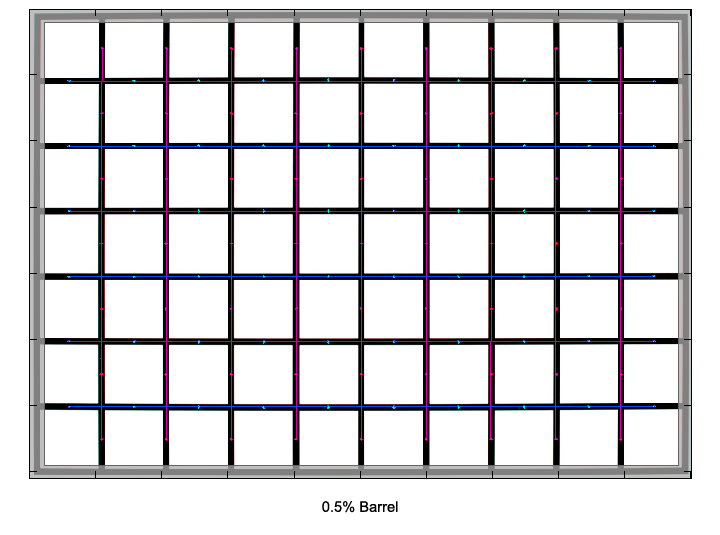|
Page 2 of 3

Distortion
The lens shows only a small amount of distortion on Nikon 1 cameras.

The chart above has a real-world size of about 120x80cm.
Vignetting
Because the lens is designed for a larger image circle, vignetting is no issue on CX cameras.

MTF (resolution)
On the high density CX sensor, the lens struggles visibly at the largest aperture setting. Stopped down however things look much better. The best aperture range on the V1 is f/2.8 to f/5.6, where the lens delivers excellent resolution in the image center, with very good to excellent borders and very good corners.
At f/8 the lens resolution drops considerably due to diffraction, especially at the borders and corners. This is a little surprising, since we have not seen similar behaviour with other adapted lenses we have tested so far.
The lens showed a slight amount of focus shift when stopping down (residual spherical aberration).
Please note that the MTF results are not directly comparable across the different systems!
Below is a simplified summary of the formal findings. The chart shows line widths
per picture height (LW/PH) which can be taken as a measure for sharpness.
If you want to know more about the MTF50 figures you may check out the corresponding
Imatest Explanations

Chromatic Aberrations (CAs)
Chromatic aberrations (color shadows at harsh contrast transitions) are moderate wide open, but increase by stopping down, reaching almost 2 pixels at the image borders at medium aperture settings.
However, CAs can easily be corrected in software, in fact the Nikon 1 cameras automatically do so if you shoot JPGs.

Bokeh
One of the primary usage scenarios for a large aperture lens is to separate the main subject from the background. In such an image the quality of the bokeh (out-of-focus blur) is of major significance.
The blur potential of the lens is somewhat handicapped due to the rather small sensor of the Nikon 1 system. Unfortunately at wide open aperture the AF-S 35 shows a rather high amount of outlining resulting in a slightly nervous bokeh. From f/2.8 onwards these outlines disappear and the bokeh smoothens considerably, however highlights in the background remain troubled by bokeh fringing (see next section).

Bokeh Fringing
Bokeh fringing is a common issue with relatively fast glass. It's visible as halos of different colors in out-of-focus areas - magenta (red + blue) in front of the focus point and green beyond.
Typical for most fast primes, the AF-S 35 shows noticeable bokeh fringing at large aperture settings, which can of course be reduced by stopping down.
In addition, these shots also show the slight focus shift when stopping down, which was mentioned in the MTF section.
|